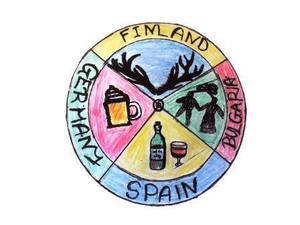17860671
UNESCO World Heritage Info Quiz
Beschreibung
Keine Merkmale angegeben
Quiz von Culture Compass Friends, aktualisiert more than 1 year ago
Mehr
Weniger

|
Erstellt von Culture Compass Friends
vor mehr als 5 Jahre
|
|
Zusammenfassung der Ressource
Frage 1
Antworten
-
United Network of Education, Science and Computing
-
United Network of Education, Science and Culture
-
United Nations Education, Science and Camping Office
-
United Nations Educational, Scientific and Cultural Organization
Frage 2
Antworten
-
1919
-
1949
-
1968
-
1978
Frage 3
Antworten
-
to promote tourism
-
to make inheriting easier
-
to preserve the world´s cultural and natural heritage
-
to collect travel brochures worldwide for a library
Frage 4
Antworten
-
From there, you always have a great view.
-
It is an internet subpage of the World Tourism Organization.
-
It is an area where you can see miniature models of important buildings.
-
It is an area or region of cultural, historic, scientific or other significance
Frage 5
Frage
5. Which three countries have the most UNESCO world Heritage sites?
Image:
World (binary/octet-stream)
Antworten
-
Italy, China, Spain
-
Germany, France, India
-
Mexico, United Kingdom, Russia
-
United States, Iran, Japan
Frage 6
Antworten
-
Aachen Cathedral, the historic center of Krakow and the Wieliczka Salt Mines
-
Sagrada Familia, Budapest Castle Hill, Tower of London
-
The Louvre, the Charles Bridge, the Trevi Fountain
-
Drottningholm Palace Theatre, Bryggen Hanseatic Museum, Bremen Central Station
Frage 7
Antworten
-
Cultural Heritage
-
Cultural Knowledge
-
National Heritage
-
Intercultural Knowledge
Frage 8
Frage
According to a list from 2018, how many sites exist worldwide?
Antworten
-
less than 500
-
up to 750
-
less than 900
-
nearly 1,100
Frage 9
Antworten
-
Paris and the banks of the Seine
-
London and the banks of the Thames
-
Rome and the banks of the Tiber
-
Cologne and the banks of the Rhine
Frage 10
Antworten
-
a) tangible, like monuments , buildings, artwork, books, machines,..
-
b) non-tangible, like language and oral traditions, performing arts, traditional craftsmanship,….
-
c) natural, like landscape, flora and fauna
-
d) digital, like digital art or digitalised texts, videos, e.g. to preserve them
-
a, b, c and d
Möchten Sie mit GoConqr kostenlos Ihre eigenen Quiz erstellen? eigenen Mehr erfahren.
